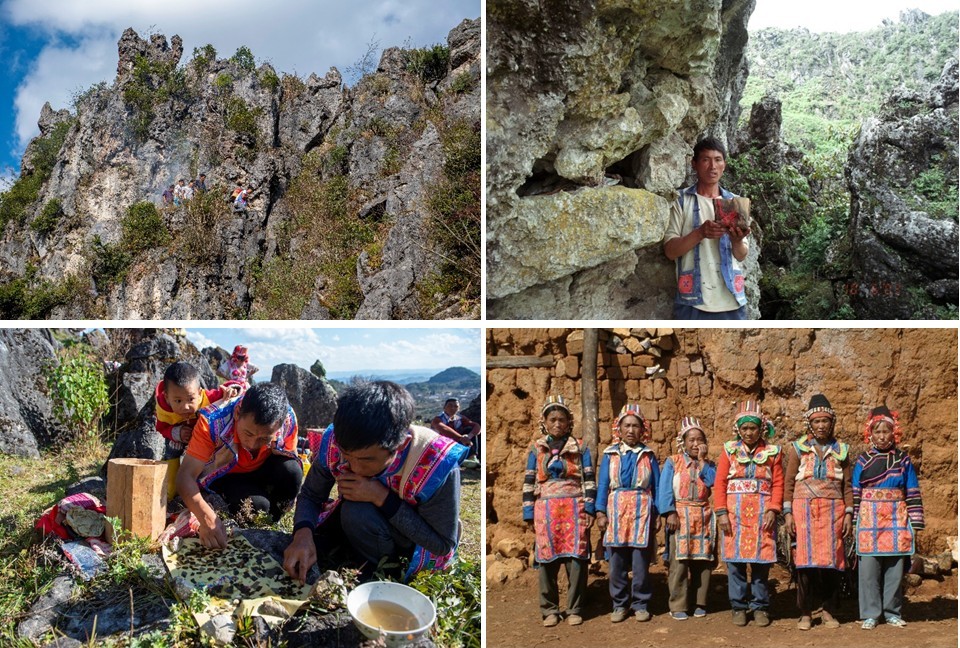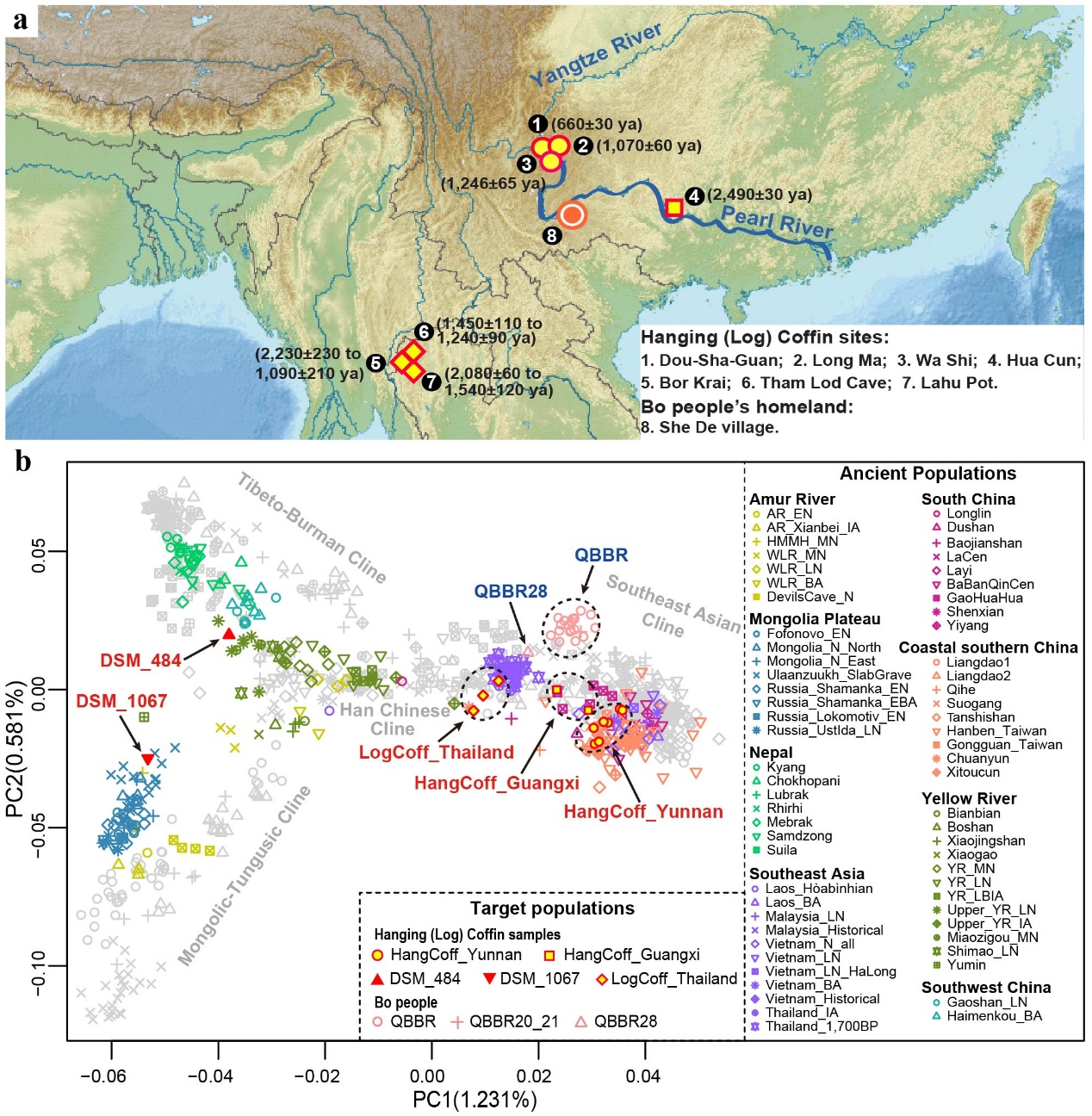A recent study published in Nature Communications reveals a direct genetic link between ancient practitioners of the Hanging Coffin burial tradition and the modern Bo people of Southwest China. Through comparative genomic analysis of 11 ancient individuals from four Hanging Coffin sites in China, four from Log Coffin sites in Thailand, and 30 whole genomes from the contemporary Bo population, Professor ZHANG XiaoMing of Kunming Institute of Zoology, and cooperating teams, have uncovered the deep ancestral origins and migratory history associated with this unique mortuary practice.
The Hanging Coffin practice, characterized by the placement of wooden coffins on cliffs or within caves, has historically been ascribed to the Bo ethnic group, which is believed to have disappeared subsequent to the Ming Dynasty. The present study reveals that contemporary Bo individuals exhibit a considerable degree of genetic inheritance from ancient Hanging Coffin communities. These ancient communities, in turn, shared intimate genetic connections with coastal Neolithic populations in southern East Asia, who are the progenitors of modern Tai - Kadai and Austronesian language speakers.
Notably, the research has uncovered an unanticipated level of genetic diversity among Hanging Coffin individuals. Two ancient specimens from Yunnan's Wa Shi site (approximately 1,200 years old) displayed distinct genetic affinities: one with Yellow River agriculturalists and Tibetan - related groups, and the other with ancient Northeast Asian populations. This implies the existence of long - distance interactions and cultural inclusiveness during the Tang Dynasty.
Genetic continuity has also been observed between Hanging Coffin groups in China and Log Coffin populations in Thailand, lending support to the hypothesis of a common origin and a more extensive cultural network spanning southern China and Southeast Asia. Nevertheless, regional disparities in genetic ancestry highlight intricate demographic processes, including localized admixture with Hoabinhian - related groups in Thailand.
The findings suggest that genomic evidence can serve as a valuable complement to archaeological and historical records, thereby shedding light on the tenacity of cultural traditions and the genetic history of marginalized communities. The study emphasizes the significance of integrative methodologies in comprehending human migration, cultural dissemination, and population dynamics in prehistoric and historic East Asia.
This research was funded by the National Natural Science Foundation of China and collaborating institutions in Thailand and China.

Figure 1. Photos of hanging coffin burials (some photos provided by photographer Peixia Xie of the China Folklore Photography Association and the Zhaotong Municipal Bureau of Cultural Relics).

Figure 2. Photos of the Bo people in Qiubei County, Yunnan Province (some photos provided by photographer Peixia Xie of the China Folklore Photography Association).
Figure 3. Geographic context and principal component analysis.

Figure 4. Ancestry composition and inferred dispersal scenarios of Hanging Coffin populations and Bo individuals.
